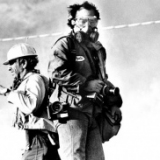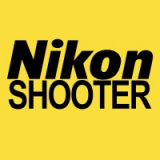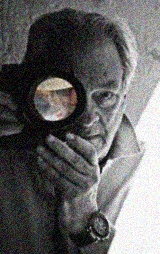- Forum
- General Discussion | Introductions | Off Topic Forum
- Photography General Discussion
- How to get closer than 1:1 for macro photography?
How to get closer than 1:1 for macro photography?
-
 Topic Author
Topic Author
- Tristan R
- Snapobsessed
-
- Nikon D700 & Sony A7R III
- Followers: 107
- Posts: 340
-
Points:
3317
Post #641718
If it makes a difference for this question, I'm a FF Nikon shooter. I'd like to see about getting greater magnification greater than 1:1. Really I'm looking for ideas that are economic and easy to implement. I know many of you are hard core macro people. I want to take a deeper dive into macro, but want to avoid things that are complex or crazy long learn curves if possible. At least till I get the hang of this.
What has been your experience with tubes?
-

- GaryA
- The Lounger
-
- Fuji Stuff
- Followers: 132
- Posts: 1180
-
Points:
10945
Post #641721
Extension Tubes can get you greater than 1:1 magnification. But at a cost of light transmission, hence the tripod. Tubes are relatively inexpensive, they come in different sizes for different magnification, they are stackable for even more variances in magnification, they will fit your lenses, (for even more variances, i.e. a tube on a 300mm will give you a different look than the same tube on a 50mm), and as the tubes are hollow (no glass), you'll maintain the same lens quality/resolution of the existing lens.
But tubes will significantly slow you down, they are somewhat awkward to use and the greater the magnification the less light hits the sensor.
There are photographs everywhere. It is the call of photographers to see and capture those images.
www: garyayala.com
-

- GaryA
- The Lounger
-
- Fuji Stuff
- Followers: 132
- Posts: 1180
-
Points:
10945
Post #641727
There are photographs everywhere. It is the call of photographers to see and capture those images.
www: garyayala.com
-

- Shadowfixer1
- Photo Elder
-
- Olympus OMD E-M1 MKII
- Followers: 1349
- Posts: 5551
-
Points:
73205
Post #641754
Post #641773
Extension tubes:
Pros- Inexpensive, easy to use, great for field use
Cons- Pretty much lose AF (but this is macro, WE DON’T NEED NO STEEKING AF!), reduces your DoF slightly, will require a bit more light, not always a tight fit.
You must match the length of the tubes to that of the lens’ focal length in order to achieve a 1/1. Going farther will give you more magnification, however, this starts to make the camera awkward and always feels “unstable” to me. I don’t recommend doing that. If that’s the case, then use...
Bellows:
Pros- Extremely flexible (Pun intended). If you are in a studio, these work very well.
Cons: You will need a bellows set up, which may cost a bit more or requires some craftiness to stabilize. There are lots of ideas on an internet search. This is not a set up for the field.
I don’t have any personal experience with these. I am a “Field only” type of macro shooter.
Raynox:
Pros- Inexpensive, clips on and off for ease, let’s you get REALLY close!!
Cons- Considered “advanced”. A 250 will give you 2.5 magnification with a macro lens. Decreases DoF significantly. Be prepared to use a flash, diffuser set up, and shooting at f/22 at all times. Can also cause heavy vignetting due to it it’s size compared to the lens. At shorter focusing distances, the vignetting gets better.
I have several photos in my album at 2.5x magnification if you are curious. They should be labeled as such.
Reversed lens:
Pros- Can use a lens you already have, increases your effective f/stops (a pro depending on what lens you’re using, otherwise, moot), good image quality
Cons-Can damage the electronics that are responsible for the AF (and IS?) on the lens Reversing the lens leaves them exposed and puts them at risk. Make sure it’s a lens that you are ok if you bump it.
I think this covers most of them. I’ll add to the thread if I can think of another one.
In conclusion, I think extension tubes are the best solution if you want the absolutely easiest, cheapest, and the most flexible, option. The other options are possibly better served in niche type macro, like studio only, or much higher magnification on a budget.
-
 Topic Author
Topic Author
- Tristan R
- Snapobsessed
-
- Nikon D700 & Sony A7R III
- Followers: 107
- Posts: 340
-
Points:
3317
-

- Nikon Shooter
- Oh Wise One
-
- 3S 3X 810 850
- Followers: 197
- Posts: 13795
-
Points:
88932
Post #641779
two sets of Kenko full Nikon contacts extension tubes
and it is very fine.
Light is free… capturing it is not!
Post #641782
Raynox and Extension tubes are your least expensive options. I only use one 16mm tube on my 90mm though. It gets me much closer without killing my DoF.
-

- Ozzie_Traveller
- Apprentice
-
- Currently using a Panny FZ-300 and FZ-2500 with occasional use of a Panny mirrorless G-series
- Followers: 124
- Posts: 2713
-
Points:
54226
Post #641789
Ah mate - this brings back memories from 30-40 yrs ago ... when I was also mad about super macro stuff [yes- and back in film camera days]
Okay - my 2-cents worth .... possible repeating what some others here also have mentioned
1) to create 1:1 your magnification needs to equal the focal length > so 50mm of tubes or bellows bolted onto a 50mm lens will give you 1:1
2) from above - 50mm of tubes on a 24mm lens will give 2:1 magnification [done this many times]
3) more then 2:1 you'll need a different lens system - see 6) below
Problems-
4) you get so close that the filter thread touches the subject &/or throws a shadow onto the subject
5) this 4) problem is why reversing rings were popular - as the lens nodal point to focus point is the focal length, therefore you will always have 50mm or 24mm distance to the subject ~ reversing naturally loses all electronics but maintains sharpness and full aperture use on MANUAL lenses
6) from 3) above, if you want to get into 3x to 10x magnifications you need to swap to 'micro' lenses from microscope makers - these are fully manual and need adapters made to measure to bolt onto your tubes or whatever you are using
7) illumination - best is 2x low-power flashguns, each at 45deg top-left & top-right from the subject and 4" to 10" from the subject. Practice will get it right
Hope this helps
Phil from the great land Downunder
www.flickr.com/photos/ozzie_traveller/sets/
-

- Roy Wilson
- The Lounger
-
- Canon 5D Mark II
- Followers: 231
- Posts: 1257
-
Points:
9557
Post #641855
Canon 5D Mark II, 30D, 40D, 50 1.2L, 16-35 2.8L Mark II, 24-105 4L IS, 24-70 2.8L, 70-200 2.8L IS, 85 1.8, 4 x 580 EX(II)
-

- Ozzie_Traveller
- Apprentice
-
- Currently using a Panny FZ-300 and FZ-2500 with occasional use of a Panny mirrorless G-series
- Followers: 124
- Posts: 2713
-
Points:
54226
Post #641868
To follow on from above-
a) Search evil-bay for $5 manual extension tubes that screw together and hopefully also include a body bayonet adapter for your camera body - get 2 sets
b) search flea markets etc for old $20 film camera wide-angle lenses- 35mm camera will be very common, 28mm less so, 24mm hard to find - but get a lens of some sort
c) chase up B&H or Adorama for a $20 reversing ring to go from the extension tube thread into the film camera filter thread - match diameter to diameter
Once you've got the above stuff you can start playing - and the film camera lens can be manually aperture opened & closed as needed. Focus at F8 or thereabouts, close down to F22 for exposures
Hope this helps
Phil from the great land Downunder
www.flickr.com/photos/ozzie_traveller/sets/
- Forum
- General Discussion | Introductions | Off Topic Forum
- Photography General Discussion
- How to get closer than 1:1 for macro photography?
Latest Reviews
Nikon’s retro-looking Nikon Zfc is anything but retro. Under its classic body is a host of features and amenities that make it a worthwhile compact mirrorless camera for 2024.
The Canon EOS R50 is one of the newest R-system cameras from Canon. Is it worth your money? Find out all the details you need to know in this comprehensive review.
The Sony FE 70-200mm f/2.8 GM OSS II is Sony’s flagship mirrorless zoom lens. As such, it’s loaded with features and has a top-shelf build quality that makes it a top pick!
The Leica SL2-S is an attractive, premium mirrorless camera with photo and video specs that are sure to impress. And with the legendary Leica name, you know this camera exudes quality!
Forum Top Posters
-
1TCav 9 posts
-
2Razky 5 posts
-
3CharleyL 5 posts
-
4Randy Shaw 5 posts
-
5Matt VanDyke 4 posts
-
6Prago 4 posts
-
7EOS_Fan 3 posts
-
8Conner 3 posts
-
9Foggy 3 posts
-
10Hassner 3 posts
Latest Articles
The Olympus OM-D E-M10 Mark IV is a micro four thirds camera released in 2020. It’s an entry-level system along with the OM-D E-M5 Mark III. Use this guide to determine which one is best for you!
Blue hour photography might not be as well known as golden hour photography, but it is every bit as good a time to create epic images of landscapes. Learn how in this quick tutorial!
Nikon’s retro-looking Nikon Zfc is anything but retro. Under its classic body is a host of features and amenities that make it a worthwhile compact mirrorless camera for 2024.
Moving from taking snapshots of your dog to creating beautiful images doesn’t have to be that difficult! Use the tips outlined in this dog photography guide, and you’ll get better results in no time.
Acrylic print photos are a beautiful way to display your favorite images. But they don’t come without some questions. Get all the answers you need about this medium in this guide!
Where do you get your landscape photography inspiration? Is it from masters like Ansel Adams? Or perhaps viewing art from other genres? We’ve got these and a few other sources for you to check out!
The Canon EOS R50 is one of the newest R-system cameras from Canon. Is it worth your money? Find out all the details you need to know in this comprehensive review.
Too often, affordable online printing companies don’t meet your expectations of what a print should look like. But there are some choices that combine affordability with superb quality!

















